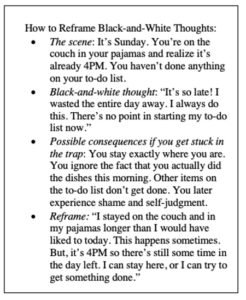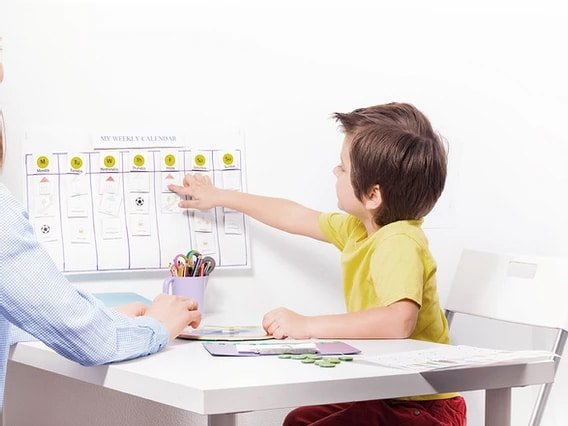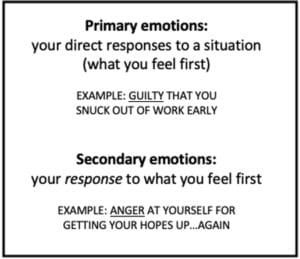By Brooke Schwartz, LMSW
Are the routines you put in place over the last couple of months becoming more and more difficult to follow? Do you have a front row seat to your motivation’s disappearing act? If so, it’s possible you’ve fallen into a stay-at-home slump. If you’re ready to help yourself find a way out, look no further — these tips will help free you from your funk:
Recognize black-and-white thinking.
 If you’ve ever had a thought with the words “never,” “always,” or “every,” — for example, “Things will never turn out okay,” or “Every time things are going well for me, something bad always happens” — you’ve likely fallen into a black-and-white thinking trap. Thinking in extremes makes it that much more difficult to acknowledge that life is sometimes (and oftentimes) gray. Beyond this, you’ll also likely struggle to problem solve and move forward. When you notice yourself thinking in extremes, acknowledge that this is the case and reframe your thought so that they’re less definitive. For example, “Things don’t feel okay right now, but I can’t be certain that will always be the case.”
If you’ve ever had a thought with the words “never,” “always,” or “every,” — for example, “Things will never turn out okay,” or “Every time things are going well for me, something bad always happens” — you’ve likely fallen into a black-and-white thinking trap. Thinking in extremes makes it that much more difficult to acknowledge that life is sometimes (and oftentimes) gray. Beyond this, you’ll also likely struggle to problem solve and move forward. When you notice yourself thinking in extremes, acknowledge that this is the case and reframe your thought so that they’re less definitive. For example, “Things don’t feel okay right now, but I can’t be certain that will always be the case.”
Look for landmarks.
Whether you’re shocked at how quickly the weeks are going by or you feel like they’re dragging along, you’re not alone in feeling like staying home has significantly influenced the passage of time. Using dates as landmarks is a helpful way to stay mindful of time (rather than letting it pass you by) and to increase opportunities to look forward to the future. Keep in mind that it’s easy to fall into a pattern of looking for landmarks in a negative and unhealthy way — for example, with thoughts such as, “Wow, I’ve already lost 8 weeks to this pandemic,” or “My birthday next month is ruined.” Instead of making time the enemy, consider it your friend. Perhaps you’re determined to exercise daily from now until the first of the next month. Maybe you’ll treat yourself to take-out on Fridays. Or, what about allowing yourself one more week to sleep in before holding yourself accountable to waking up before 9AM?
Speaking of time, how do you feel about the way you’ve been spending it? Chances are you’ve had thoughts like, “I can’t believe I haven’t moved my body for this long,” or “Why didn’t I try to be more productive?” Instead of blaming yourself for what you could have done differently, try nonjudgmentally mulling over what you did do and think about how you can change that behavior. For example, instead of telling yourself, “I just sat around doing nothing for the last few months,” make an accurate and nonjudgmental statement such as “I spend approximately 9 hours on the couch every day.” Ask yourself what you’d like to be doing differently (“Would my mood improve if I took a walk in the middle of the day?”) and, moving forward, what you need to do to make that happen (“Would it help if I set a reminder for 2PM?”).
Consider when you’re most vulnerable and plan ahead.
Everyone has a set of factors that make them more vulnerable to negative emotions. Some are crankier when they haven’t eaten, feel sadder when the sun goes down, or experience intense agitation when their neighbor plays loud music. Think about the situations that lead you to feel the worst and make a plan in advance to help you get through them. Could you set a reminder to have a snack around 3PM? Would it help to turn all the lights on right before sundown? How about putting headphones in at 10PM to drown out the sounds of noisy neighbors? Planning ahead is one way to make the negative emotions less intense — and possibly get rid of them altogether.
Tidy up before bed.
One study found that women who describe their homes as cluttered and full of unfinished projects show increased depressed mood throughout the day. You may find it easier to emerge from the stay-at-home slump if your space is tidy. After working, studying, or doing other daily tasks, clean up your workspace however possible. This might mean pushing in your desk chair, turning off the kitchen light, or exiting out of your email. The less cluttered your space — both physical and virtual — is before you go to bed, the more likely you are to wake up feeling ready to tackle the next day.
It’s believed that suffering through difficult situations can actually lead to positive growth. Take some time to think about how you might grow from the current circumstances. In other words, make lemonade out of life’s lemons. Take the lemons (for example, staying home, being isolated, or being out of work) and turn them into lemonade (increasing your sense of independence, finding new hobbies that bring you joy, or being more regularly in touch with family). The goal is to simultaneously acknowledge and validate the pain, and to participate in what life still has to offer. These two ingredients make up the recipe for that sweet lemonade!
Practice being in the moment.
It’s easy to get caught up thinking about what’s happened in the past and what will (or won’t) happen in the future. Try instead to stay with the present moment, noticing what you’re experiencing right now. Being in the present moment has been found over time to improve mood and relationships, reduce stress, boost working memory, and even help manage chronic pain. An easy way to be in the moment? Identify one way in which you are currently experiencing each of your five senses (touch, sight, hearing, smell, and taste). If you’re stuck on the couch for hours on end, notice what it feels like for your body to touch the couch. Run your hands along the fabric. Can you identify 5 distinct sounds you hear? How many red objects are within sight?
Frankly, the stay-at-home slump stinks. And it doesn’t have to last. We’re wishing you luck navigating these tough times and hoping these tips help!






































